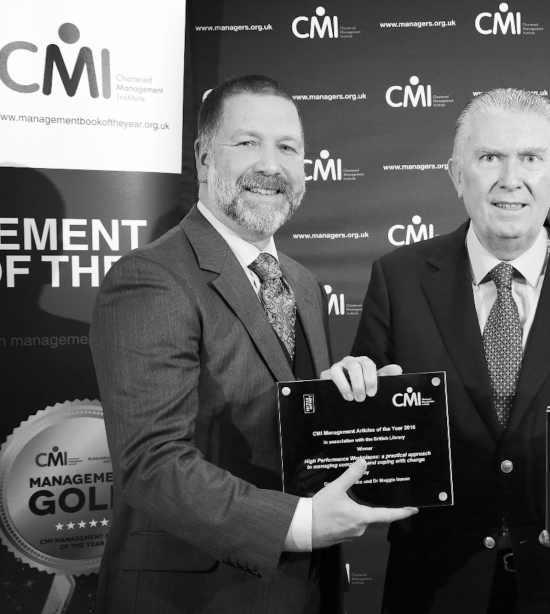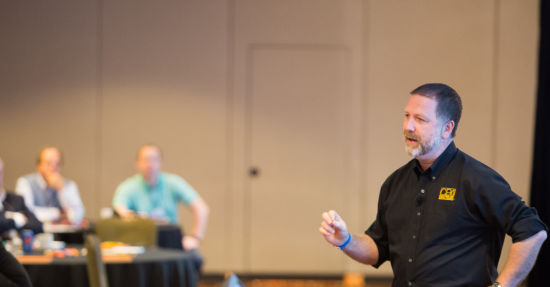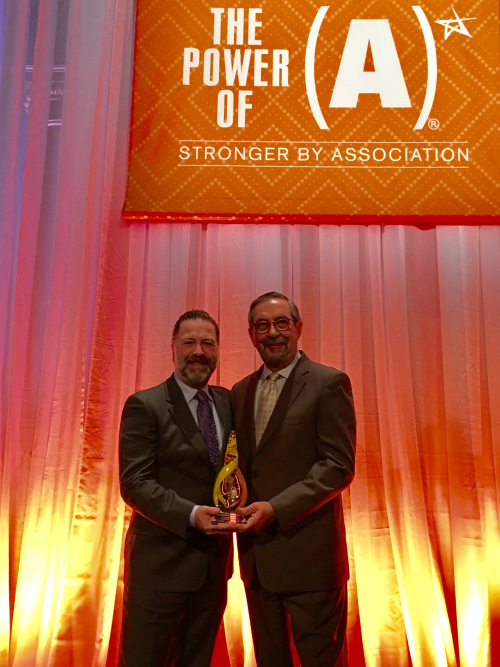Dr David Griffiths: Is Creating a Successful KM System Really That Simple?

Posted by TallyFox on 23 March 2017
Dr David Griffiths, the founder of K3-Cubed Ltd has been rewarded for his work, year after year, as one of the key worldwide influencers in the Knowledge Management field.

He holds a PhD in Knowledge strategy and management and an MSc in the Management of Training and Development, both from the University of Edinburgh, where K3-Cubed (K3) was started up as a result of research into knowledge management, business agility and human resource development.
As they say on their website, "K3-Cubed leverages the science of business to deliver multi-award winning High-Performance & High-Reliability management consulting, advisory, training and analysis services for Organisational Development, Knowledge Management, Learning Organisations, Rapid Learning, Strategic Management and Change Management projects."
We started our interview by asking about this part of his work.
Dr David Griffiths: We are in a talent led knowledge economy, and there is a short supply of high-levels of competency and capability around critical thinking skills, adaptive capability and similar. When talking about high-performance knowledge management, the focus is on the people, not the technology. We can have the best technology solution we can build, the best processes and the best structures put in place, but ultimately people make them work. Technology is a support mechanism for people who are the solution. The other part of our work is around high-reliability which originated from our work with organisations where critical failure can end in catastrophic circumstances, such as energy or healthcare. In the organisational context, we look at what we call STIQC issues which stands for Safety, Time, Innovation, Quality, Cost and Experience, and the way organisations are experiencing negative impacts in those areas.
TallyFox: How do you measure the success of this process?
Dr David Griffiths: For this purpose, we established the FAIRR (feelings, access, impact, results, return) model and we look at it as a pyramid. We start by assessing how people feel about their intranet system governance guidelines or a knowledge management program, which is the base of a pyramid. It starts with feelings, then it moves to access, impact, results, and the top of the pyramid belongs to return on investment. We say that we can go into any organisation and at a maximum of 90 days but usually at 30 to 60 days we can determine the value that has been created by the knowledge management project, whether that be technology or people based.
TallyFox: Is that the way to measure the impact a KM program delivers?
Dr David Griffiths: Yes very much. It aligns with one of the big changes that have happened over the last couple of years. An answer to the question “How do we measure the impact of knowledge?” has come from the accounting community. They came up with something called International Integrated Reporting Framework, which sets out measurement criteria for the human, social and intellectual capital within an organisation. They list three of the core six capitals that an organisation has to report on (which in turn reflects the complexity of how an organisation creates market value) and among them are clear drivers for a knowledge management program, regardless of the way it’s called: quality programmes, risk programmes, learning and development, learning institutes etc..
TalyFox: What was the motivation behind creating your KM courses?
Dr David Griffiths: We see a big gap in the market as very few people are able to actually quantify the value of knowledge management, and we found a way to do it. Knowledge management can't sit as an isolated function, for it to be successful it has got to embrace interdependence. And that means it's got to work very clearly with HR, with IT, with operations, project management etc., but I would underline the importance of HR. Too often knowledge management is aligned with Information Management, as a part of an IT system, which is a big mistake. Knowledge is a human condition so if we take the people out of the system the technology is not going to do very much. I have yet to see a high-performing knowledge management system that has not have that level of alignment. If you don't align your knowledge management efforts with HR, the system will fail. Small areas of success may appear with a small group of motivated people, but when you try to scale it, it won’t work.

TallyFox: How has today's dynamic and agile world shaped knowledge management?
Dr David Griffiths:
The world is becoming more interested in cognitive behavioural aspects: the way people learn, the way they acquire knowledge, create. Traditional knowledge management projects just don't respond to that. They are more focused on increasing the cycle time for onboarding new employees, or exit interviews with the employees that are leaving the company, for example. Exit interviews are a waste of time, like chasing unicorns - you can't know everything that a person knows. We call it “Theatre”. It looks as if they're creating value because of all those meetings and captured information placed in a database, but it turns out there's very little you didn't know anyway. We, on the other hand, work with the people that are staying. We will work with groups of 20 to 30 people to teach them how to ask more powerful questions to start eliciting knowledge from a person that is leaving. The process lasts from 30 to 60 days. By just training people to ask more powerful questions, we are creating mini knowledge managers who can spot gaps in their (or in their team’s) knowledge and know what they should do about it. How it should be recorded how it should be embedded etc. That's the difference between what we do and what a lot of other companies do. We focus on the communities.
TallyFox: Can you give us an example of such a question?
Dr David Griffiths: Yes
To find out how a meeting went, you can simply ask: “How was your meeting with David?”, and you’ll probably get a default response, something along the lines of “OK”.
We call it a System One response and it's an automated response. However, If I asked you “What was the one most important thing to come out of the meeting that will impact us in the short-term?”. It's a different type of question that makes you pause, engage System Two, and we open up a deeper conversation. People think that knowledge management is about these grand technology implementations, and it can be, but more often than not, it’s is about the very powerful changes on the front line such as just getting people to ask the right questions.
TallyFox: And the technology is the support which helps you store the answers to those questions for future use?
Dr David Griffiths: This is important, as people are communicating via various platforms, and that information needs to surface on your platform, not everywhere. This is why we chose Tallium for our project at the University of Wales.
TallyFox: Which content sharing options that Tallium offers proved as the best for sharing that information.?
Dr David Griffiths: With Tallium, people liked articles the most. They loved being able to bring in expert opinions or share expert articles and then being able to use them as a discussion starter or a learning object. A member was to start a discussion as a reference to an article (sometimes containing a video or a .pdf attached) and then we would see people's experience starting to surface because of that, and that is what became the most valuable to us.

TallyFox: You’ve written a lot on the subject of knowledge management systems failing us. Why?
Dr David Griffiths: If we look at everything from search results to the number of publications, we're starting to see the laggards coming on board with KM. People are not talking about knowledge management anymore because people think it's dead. People are still interested in improving quality, understanding risk, they're still interested in knowledge sharing, rapid learning, developing agility or resilience and as an organisation, they don't want to see duplication of effort, wastage. These things have been going on for a long time. Knowledge management was introduced as a silver bullet that's going to get everybody know everything about everything. It didn't deliver and has continued to not deliver.
TallyFox: Will knowledge management be accepted differently or transform into something else?
Dr David Griffiths: There are already present solutions for learning organisations that are standing the test of time. With the knowledge management courses we hold, we look at how to bring people and technology together to help them to rapidly learn. One of the requisites is to have the right governance in place to ensure that these efforts deliver results.
We do a lot of work around search capability to see how difficult it is to locate the critical documents. If we find a gap in the governance, it is usually because people just didn't understand how to do it. Alternatively, we discover that there was no governance in place at all. The right technology solution is a powerful catalyst to accelerate learning and knowledge sharing in organisations, but there must be an appropriate governance in place, perhaps supported by an organic taxonomy. We’ve seen it being addressed, and people almost tend to forget the huge amount of legacy documents that are not accessible because they are still not set up for searchability, findability.
Ultimately, with something like TallyFox Tallium, supported by an appropriate simple taxonomy, and a good, supervised governance structure that people actually reinforce and practice, you don’t end up with a fuzzy mess.
TallyFox: You think that a proper strategy for software vendors would be to partner with domain experts to make sure that the right governance is put in place?
Dr David Griffiths: Exactly. Where I’ve seen software implementation fail is where people don't recognise that learning and knowledge is a human condition. You can build the best taxonomy, the best processors, the best information architecture, it can be brilliant but they need to be able to use it and they will be the ones who determine whether it will succeed or fail. It is here that partnering with HR is necessary. We, as knowledge managers, have to find out what motivates people, what their pain points are, if they will engage with the software, will they feel good about it.
For example, we found out that people, when they create a document, don't actually understand how to make that document findable for other people. They think that just adding keywords and a little bit of metadata will make it findable. We help create governance documents that explain to people what they need to do, and we are proactive in auditing that system. We create audits, report on value, on findability so that we can start finding gaps quickly.
To further illustrate my point, I've just finished a big project in the USA, a SharePoint intranet implementation. We discovered that the SharePoint provider did not provide any type of governance or understanding of governance, and the system was failing. Just by putting in place the governance structure where we are now auditing the content, making changes to the content so they can report on it, is making a huge difference. In terms of value added, any software vendor who brings that to the table understands what KM is all about.

Comments
Leave a comment